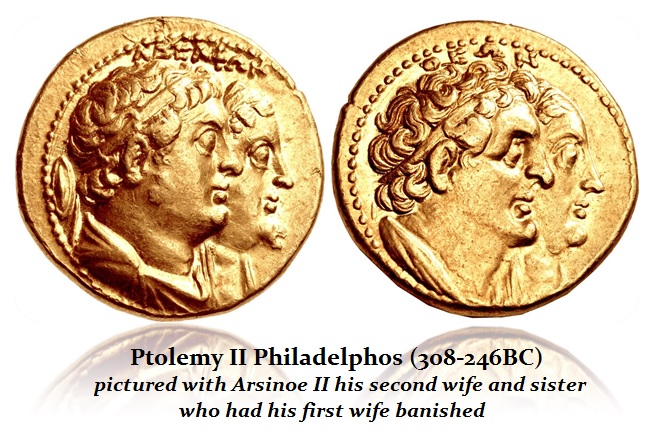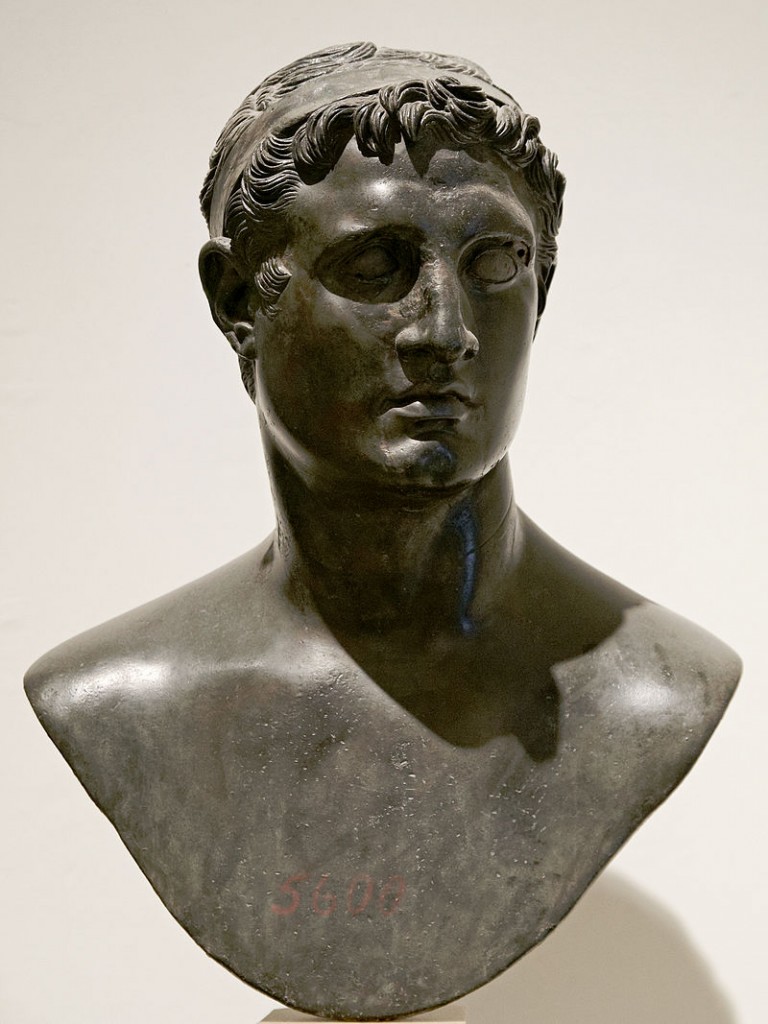Monetary History of Egypt
Ptolemy II Philadelphus
In about 285 BC, Ptolemy I Soter took as his co-ruler one of his sons by Berenice, Ptolemy II Philadelphus, who became the sole ruler of Egypt upon his father’s death in about 282 BC. Ptolemy II was not born in Egypt. His father had him schooled in the tradition of Alexander the Great, who was taught by Aristotle himself. It was Ptolemy I who buried Alexander the Great in Egypt and named the city Alexandria thereby establishing himself in the traditional Egyptian custom of the new ruler ensures the proper burial of the former.
Ptolemy II Philadelphus upon taking the throne in Egypt took the Egyptian name, Meryamun Setepenre, which means “Beloved of Amun, Chosen of Re”. His reign was highly successful as he expanded the scope of his power around the Mediterranean and secured the internal stability of Egypt. He completed many of his father’s dreams building the famous Pharos Lighthouse and the Alexandrian University and Library.

Ptolemy II will always be best remembered not for his accomplishments, but for his fame derived from his marriage to his full sister – Arsinoe II. Nonetheless, you always have to look a bit deeper below the surface to see that it was not his doing, nor even his father – but that of his sister. Ptolemy II at first entered a dynastic marriage with Arsinoe, the daughter of Lysimachus (c. 360 BC – 281 BC) of Thrace, who had been one of Alexander the Great’s foremost generals. By her, he had three children.
However, when his sister, another Arsinoe, desired power,she returned to Egypt and cultivated her brother who was her junior by eight years. Ptolemy II ended up repudiating his existing wife based on rumors of treason inspired by Arsinoe II his sister. His first wife was then banished to Coptos in Southern Egypt. Ptolemy II then married his full sister Arsinoe II sometime before 274BC. She promptly adopted his first wife’s children. Arsinoe II insisted that she now appear with her brother/husband on his gold and silver coinage. She also had coinage struck in her own name. You will notice that Arsinoe II dominated her brother and place her image on the coinage whereas Ptolemy II rarely appears retaining the portrait of his father.
Monetary System
- AU Double-Oktadrachm (55.5 grams) Veiled hd Arsinoe II (two known)
- AU Oktadrachm (27.8 grams) Veiled hd Arsinoe II
- AU Oktadrachm (27.8 grams) Conjoined busts of Ptolemy I & Arsinoe II (obverse) / Ptolemy I & Berenike I (reverse)
- AU Pentadrachm (17.8 grams) Diadem hd Ptolemy I
- AR Dekadrachm (35 grams) Veiled hd Arsinoe II
- AR Tetradrachm (14.2 grams) Diadem hd Ptolemy I
- AR Tetradrachm (14.2 grams) Veiled hd Arsinoe II
- AR Drachm (3.5 grams) Diadem hd Ptolemy I
- AE46 Diadem head of Zeus
- AE42 Diadem head of Zeus
- AE36 Diadem head of Zeus
- AE29 Diadem head of Zeus
- AE28 Laurel head of Zeus
- AE23 Diadem head of Zeus
- AE22 Laurel head of Alexander
- AE22 Diadem head of Zeus
- AE17 Laurel head of Arsinoe II









